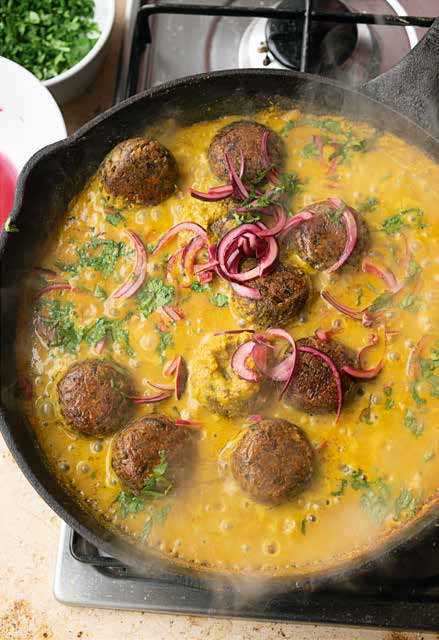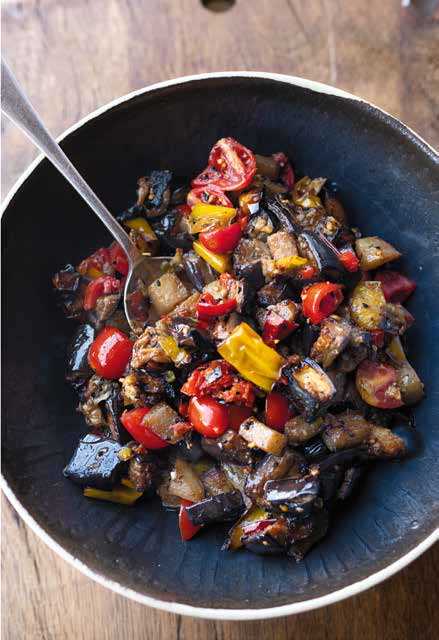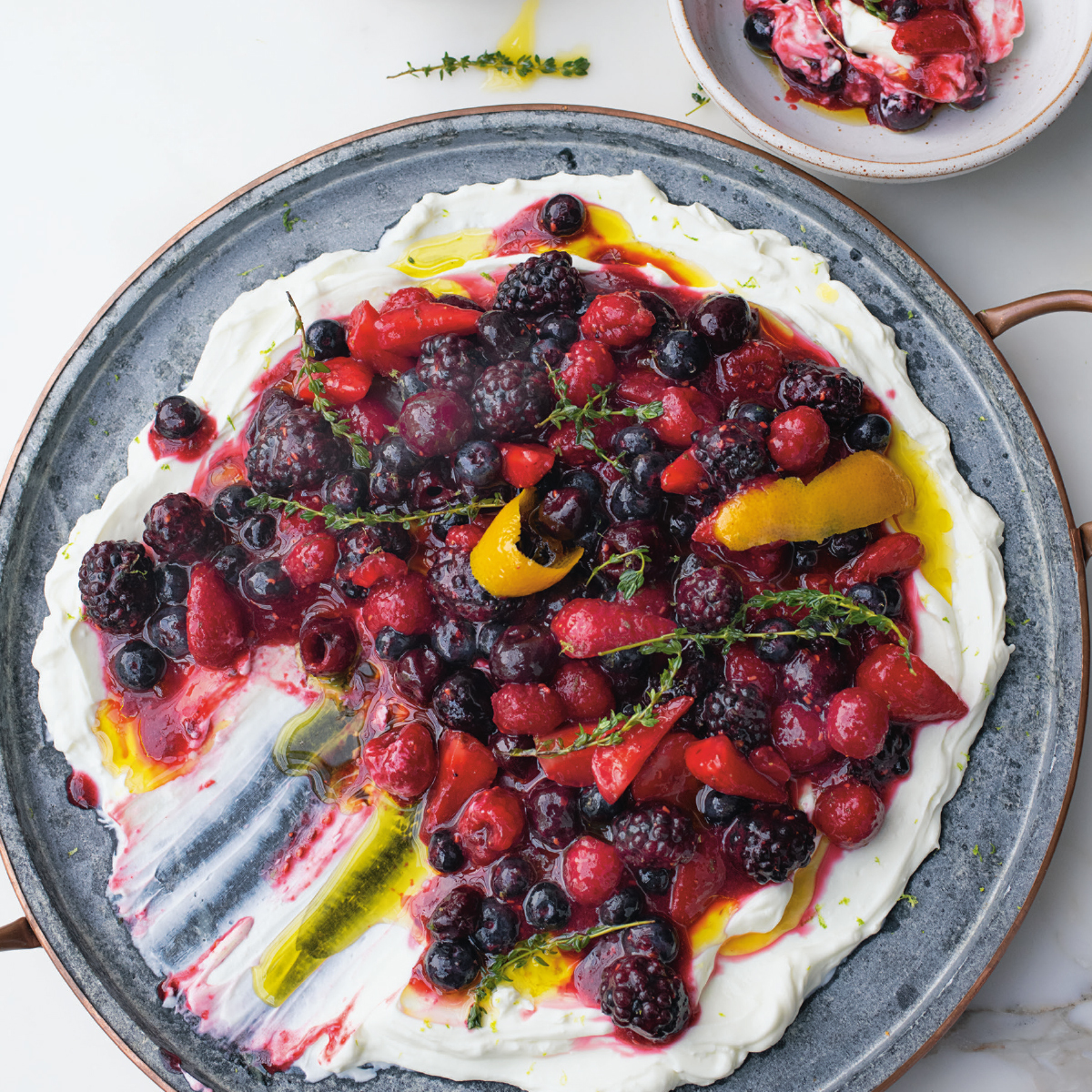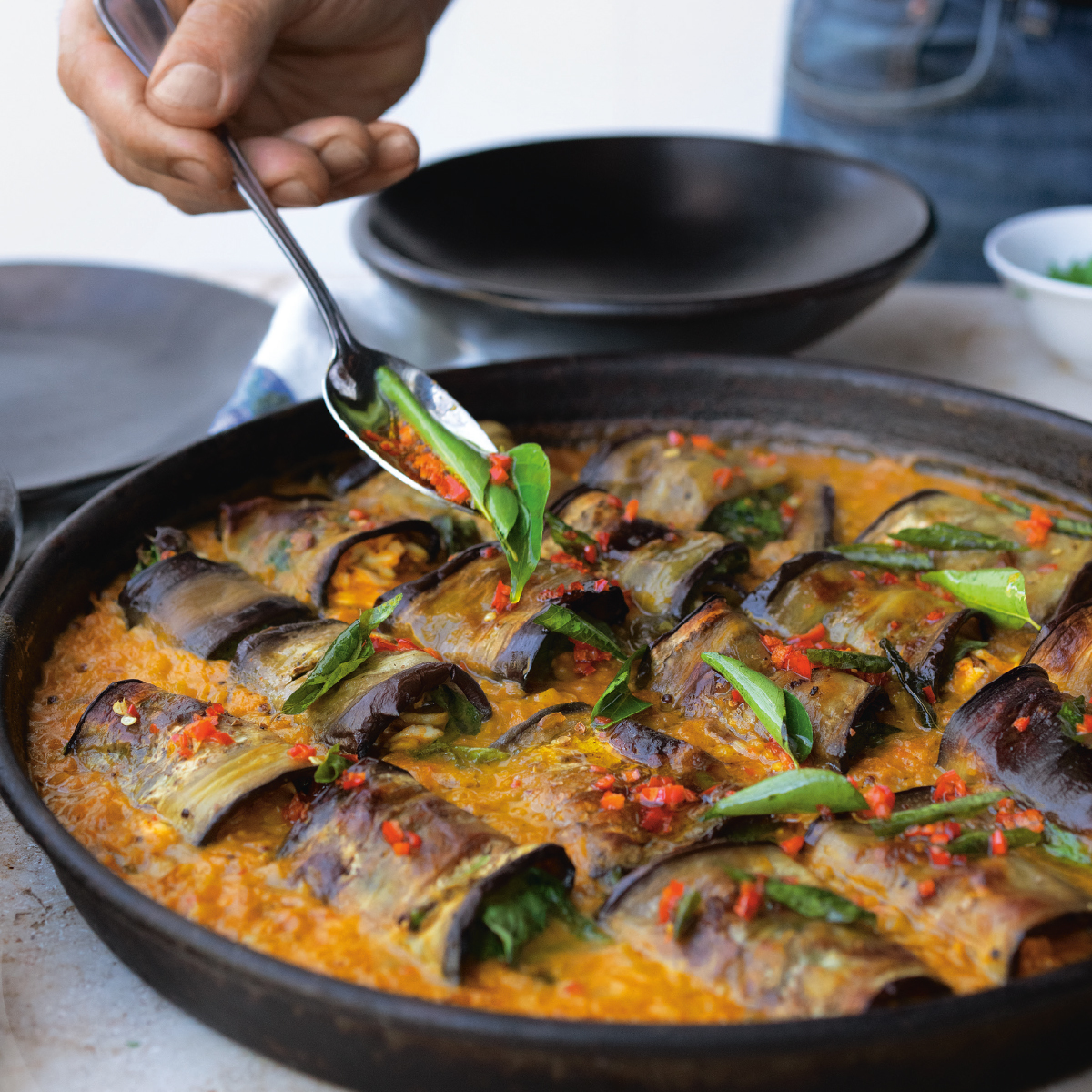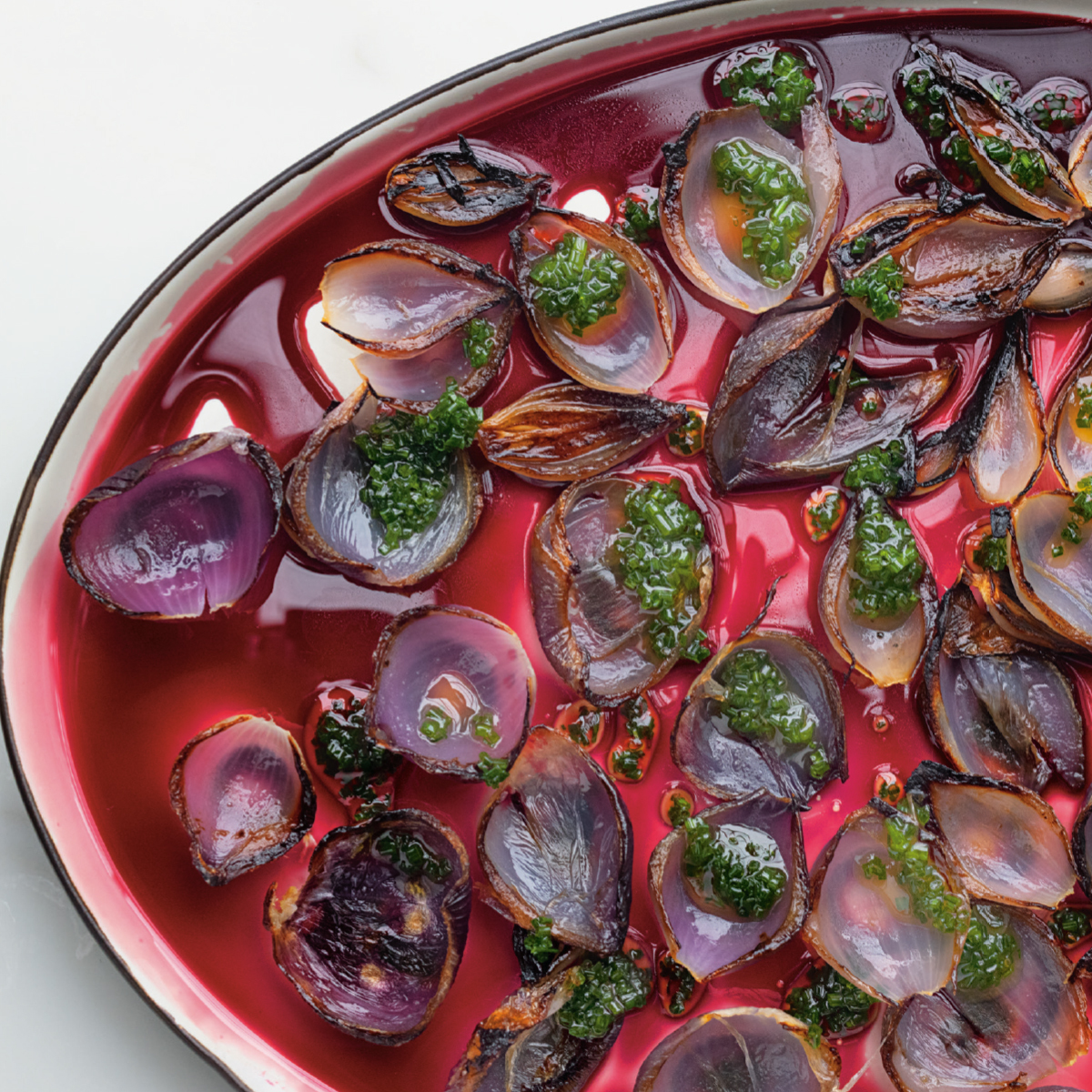IntroductionI have never been shy about my love of vegetables. I have been singing the praises of cauliflowers, tomatoes, lemons, and my old friend the mighty eggplant for over a decade. I have done this on my own—in cooking demos, on book tours, and in the pages of books and magazines—and I have done this in a group, in lively discussions with colleagues in my restaurants, and in the test kitchen. It’s become my mission to present vegetables in new and exciting ways and I have embraced it with nothing but enthusiasm.
Still, in the spirit of openness, I must confess to a small niggling doubt that creeps in now and then. How many more ways are there to fry an eggplant, to slice a tomato, to squeeze a lemon, or to roast a cauliflower? How many more secrets are there to be discovered in a handful of lentils or a bowl of polenta?
The answer, I am delighted to report, is many. My journey of discovery into the world of vegetables—by which I mean anything, really, that originates from a plant—has taken me in all sorts of directions that I simply hadn’t imagined. If my first vegetable book,
Plenty, was the honeymoon period, a great big party where certain vegetables—peppers, tomatoes, eggplants, mushrooms—got a whole chapter to themselves,
Plenty More was all about process; recipe were divided into the ways in which the vegetables were treated: mashed or tossed or grilled and so forth.
Flavor is the third book in the series, it’s about understanding what makes vegetables distinct and, accordingly, devising ways in which their flavors can be ramped up and tasted afresh; it’s about creating flavor bombs, especially designed for veg. This is done in three ways.
PROCESS, PAIRING, PRODUCEThe first step has to do with some
processes that happen to vegetables when they are cooked, or to some key ingredients with which they are cooked. The second is about
pairing; what you match a vegetable with to draw out one of its distinct qualities. The third deals with the
produce itself: the sheer depth of flavor that certain ingredients naturally possess that allows them to play a starring role in a dish, more or less by themselves, or to prop up and brightly illuminate other vegetables.
So, after
Plenty and
Plenty More, Flavor is “
Plenty 3,” if you like, or
P3, with the three P’s (process, pairing, and produce) being the key concepts for explaining what makes certain vegetable dishes taste so good. Let me give you some examples to illustrate this, using some of my favorite ingredients: celery root (to demonstrate process), tamarind and lime (to think about pairing), and mushrooms (to show how it can be just the produce itself doing the work).
First,
process. Three recipes in this book involve cooking celery root whole for more than two hours, then dressing and serving it in different ways. During the initial cooking of the celery root, and before any other ingredient is added, something truly magical happens. Much of the water in the celery root evaporates, its flesh turns from white to golden brown, and it becomes sweeter and richer. This browning and caramelizing, which happens to many veg (and non-veg) when they are cooked in a certain way, is a key process that teases out flavor from them. Whatever you choose to do to the celery root after this is less important. Indeed, you don’t need to do anything more to it at all, if you don’t want to; the browning process is such a flavor bomb that it’s heavenly when eaten at this stage, cut into wedges and served with a squeeze of lemon or a dollop of cr.me fra.che. Other processes that have a similarly terrific effect are charring, infusing, and aging (which is mostly done to ingredients well before they reach your kitchen), all of which transform and elevate vegetables to great heights.
Illustrating my concept of
pairing is a little less straightforward because, every time you cook, you obviously pair ingredients together. What I have done, though, is identify four basic pairings—sweetness, fat, acidity, and chile heat (as in spicy heat)—that are fundamental. Introducing one or more of these key pairings to a dish has the effect of showing the vegetables (or fruit) with which they are partnered in a completely new light. The asparagus salad with tamarind and lime (page 171) is a great example. Many argue that asparagus is so magnificent—with a subtle, yet refined flavor—that it doesn’t need to be paired with anything, really, except some oil or butter and possibly a poached egg. I have made this same point myself in the not-sodistant past. What I have learned more recently, though, is that asparagus can actually stand its ground when paired with robust and purportedly dominant ingredients. It does this particularly well when the paired element is complex and multilayered. In the salad I mentioned, raw asparagus is paired with three sources of acidity: lime juice, vinegar, and tamarind, each with its own particular characteristics. All these layers and iterations of sour come together in a single harmony that heightens and alters the taste of raw asparagus in a way that really opens your eyes to the vegetables.
The third concept has to do with
produce. Vegetables, famously, are not as good at imparting flavor as are meat and fish, because of their high water content and the low levels of fat and protein they contain. Some, though, are absolutely brilliant at it. Our spicy mushroom lasagne (page 228) is proof of the power of this particular veg to carry the weight of a whole complex dish on its own little shoulders, giving any meat a good run for its money. Not many vegetables can do this, delicious as they may be, but since mushrooms are bursting with umami—that satisfying savory flavor that makes tomatoes, soy sauce, cheese, and many other ingredients so impactful—they are perfectly capable of providing ample flavor and some serious texture to give vegetarian dishes a very solid core. Other plant-based ingredients that show similarly impressive skills are alliums (onions and garlic), nuts and seeds, and fruit. All four are the types of produce that you can rely on to do some seriously hard work in your kitchen.
While making a delicious recipe can be simple, great cooking is never the result of one element in isolation—it is the interplay of different types of
processes, pairings, and
produce in one dish that elevates and makes it exquisite. Using the lasagne example again, this dish clearly relies heavily on mushroom umami (produce), but it also benefits greatly from an interplay of different fats (pairing) and the complex art of aging cheese (process). The structure of this book, in which each chapter highlights one particular kind of process, pairing, or produce, is, therefore, not to undermine or deny the existence of any other elements in a recipe; its purpose is to highlight the USP (unique selling point) of a dish, a particular element at the core that makes it particularly delicious or special.
Copyright © 2020 by Yotam Ottolenghi and Ixta Belfrage. All rights reserved. No part of this excerpt may be reproduced or reprinted without permission in writing from the publisher.

